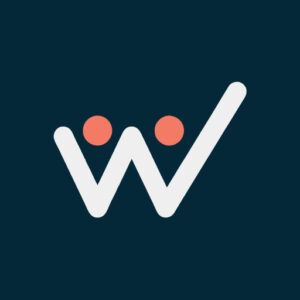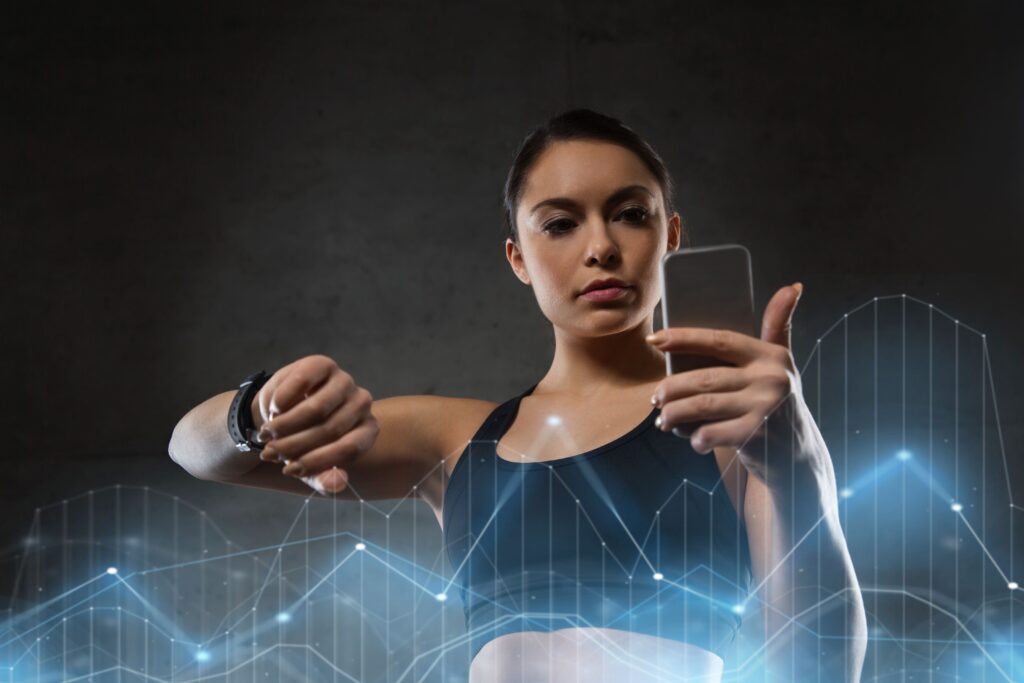Introduction: The Tech Rush in Workplace Wellness
If 2023 was the year of step challenges and meditation apps, 2025 is the era of AI coaches, wearable recovery trackers, and personalized wellness data.
Every month, a new tool promises to help employees “optimize” their sleep, “retrain” their breathing, or “hack” their recovery. It’s easy to see the appeal. With stress, burnout, and disengagement still topping HR’s concern list, organizations are eager for anything that makes wellness measurable—and personal.
But with so many tools flooding the market, HR leaders are asking the right question:
Which of these AI wellness tools actually help people feel better—and which are just hype?
Let’s unpack the reality behind wellness tech, the risks of digital fatigue, and how platforms like Woliba combine human behavior, automation, and analytics to turn data into daily wellbeing.
1. The Rise of Wellness Tech: Promise Meets Pressure
Over the last five years, the wellness tech market has exploded. Wearables track steps, heart rate, and sleep cycles. AI “coaches” promise tailored guidance on everything from stress to nutrition. Meanwhile, wellness platforms compete to become the digital home for all things health.
According to Fortune Business Insights, the global corporate wellness market is projected to reach $100 billion by 2030, driven by the demand for personalized, data-backed solutions.
But more data doesn’t always mean more wellbeing.
The Good:
Technology has made wellbeing more accessible than ever. Wearables like Fitbit, Oura, and Garmin have helped millions take small, daily steps toward healthier routines. Data insights can help employees visualize progress—and stay motivated.
The Challenge:
However, too much tracking can backfire. Studies show that excessive monitoring can increase anxiety and lead to “data fatigue”—the sense of being overwhelmed by constant feedback loops. When everything becomes a metric, employees lose sight of meaning.
The key isn’t more tech. It’s smarter, simpler, and more human-centered integration.
2. Wearables: Useful Tools or Digital Distractions?
Wearables have changed how employees view movement and recovery—but their impact depends on how organizations use them.
What’s Helpful:
- Activity reminders: Gentle prompts to move, stretch, or hydrate throughout the day can counteract sedentary habits.
- Sleep insights: Tools that highlight sleep consistency—not perfection—help users adjust routines with awareness rather than judgment.
- Team challenges: When integrated into wellness platforms like Woliba, wearables become a connector, not a competitor. Employees celebrate progress together instead of comparing performance.
What’s Hype:
- Obsessive tracking: Constantly checking metrics (e.g., heart rate variability every hour) can increase stress, not reduce it.
- “One-size-fits-all” recovery scores: Wellness is contextual. A smartwatch can’t know if an employee’s fatigue is from overwork, emotional strain, or childcare demands.
- Vanity metrics: Tracking without intention doesn’t equal wellbeing. A perfect “sleep score” means little if stress or loneliness remain unaddressed.
Wearables work best when paired with education and reflection—two things Woliba’s human-centered platform provides through interactive learning and wellbeing challenges.
3. The AI Coaching Boom: Personalization or Automation Overload?
AI wellness coaches are one of 2025’s hottest trends. Apps now use machine learning to analyze user behavior and deliver “personalized” recommendations: when to take breaks, how to breathe, even how to communicate with coworkers.
While this technology can enhance access, it’s not a substitute for empathy.
What’s Helpful:
- Personalized nudges: AI can identify patterns and remind users to move, hydrate, or log moments of gratitude.
- Behavioral coaching: Predictive algorithms can adjust suggestions based on actual engagement, making wellness more relevant over time.
- Scalability: AI bridges the gap for organizations that can’t offer 1:1 coaching to every employee.
What’s Hype:
- Overpromised emotional intelligence: AI can mimic empathy—but not feel it. No algorithm truly understands burnout.
- Generic advice disguised as personalization: Some platforms deliver “custom” messages that are simply recycled scripts.
- Privacy pitfalls: When AI relies on sensitive data, trust erodes quickly if transparency is unclear.
AI should amplify human connection—not replace it. Woliba takes that approach: combining automation with authentic recognition, community challenges, and manager-driven engagement that reinforces wellbeing at every level.
4. The Recovery Revolution: Rest Is the New KPI
The conversation around recovery is finally catching up to performance.
Organizations are realizing that energy—not hours—is the real driver of productivity.
Recovery tools are now everywhere: sleep trackers, breathing sensors, HRV monitors, and even “smart” mats that analyze rest quality. Yet, the best recovery doesn’t come from devices—it comes from culture.
What’s Helpful:
- Encouraging proactive rest: Leaders who model breaks and promote recharge time create psychological permission for others to do the same.
- Micro-recovery moments: Simple prompts—like Woliba’s “pause” challenges or quick meditation streaks—integrate recovery into the workday.
- Tracking trends, not perfection: Using data for awareness, not judgment, keeps recovery positive.
What’s Hype:
- Recovery as competition: When rest becomes a leaderboard metric, its purpose is lost.
- Tech-only solutions: No wearable can compensate for unclear priorities or unrealistic workloads.
- Neglecting mental recovery: Sleep is only one piece of the puzzle; reflection, gratitude, and connection matter too.
A recovery culture doesn’t need fancy tech—it needs consistent signals from leadership that wellbeing matters as much as output.
5. The Real Challenge: Too Many Tools, Too Little Connection
Most HR leaders now face a paradox: more wellness tools than ever, but lower engagement.
Employees feel overwhelmed by fragmented systems—one app for recognition, one for fitness, one for mindfulness, and another for data.
According to Deloitte’s 2024 Wellbeing at Work Survey, 59% of employees say their organization’s wellness offerings feel disconnected or confusing.
In other words, technology intended to simplify wellbeing often adds complexity.
The Fix: Integration Over Isolation
The future of wellness isn’t more apps—it’s a unified experience.
Platforms like Woliba consolidate wellness, recognition, learning, and analytics in one ecosystem. This reduces digital fatigue while making participation natural and enjoyable.
Woliba’s platform syncs with wearable data, but contextualizes it within the bigger picture—recognition, purpose, and culture—turning numbers into narrative.
6. Measuring What Matters: From Metrics to Meaning
Data can tell us a lot—but not everything.
While wearables might measure sleep hours or movement, they can’t capture belonging, purpose, or joy. Yet these are the drivers of lasting wellbeing.
Why Measurement Still Matters
- Quantitative data helps identify trends, engagement levels, and progress.
- Qualitative insights—like sentiment analysis, recognition patterns, and employee feedback—reveal how people feel at work.
- Combining both provides the full picture of wellbeing ROI.
This is where Woliba stands apart.
Its analytics layer connects physical wellness data (like participation or challenge activity) with emotional and cultural indicators (like recognition frequency and manager engagement). The result? A measurable link between wellness, performance, and retention.
Example:
Instead of showing only “steps taken,” Woliba might reveal that employees who join social fitness challenges and receive peer recognition report 30% higher overall wellbeing scores. That’s insight with impact.
7. What HR Leaders Should Look for in Wellness Tech
When evaluating AI wellness tools, HR professionals should ask three questions:
- Does it reduce friction—or add it?
If employees need to manage multiple logins or download several apps, engagement will drop. - Is it built on science—or slogans?
Look for platforms grounded in behavioral psychology, habit formation, and validated wellbeing frameworks. - Does it serve people—or just data?
Tools should empower employees to reflect, connect, and grow—not feel surveilled.
Checklist for Choosing the Right Platform
Integrates wellness, recognition, and learning in one place
Supports personalization without sacrificing privacy
Offers analytics that HR can act on
Makes wellness feel human, not robotic
Spoiler: Woliba checks every box.
8. Case in Point: How Woliba Turns Data Into Daily Wellbeing
Let’s make it tangible.
Here’s how Woliba differentiates itself from standalone wearables and AI apps:
| Feature | Wearables | AI Wellness Apps | Woliba |
| Tracks movement & sleep | ✅ | ❌ | ✅ (via integrations) |
| Offers emotional wellbeing support | ❌ | ✅ | ✅ |
| Connects data to recognition & engagement | ❌ | ❌ | ✅ |
| Provides manager visibility & team insights | ❌ | ❌ | ✅ |
| Automates but stays human-centered | ❌ | ⚠️ limited capabilities | ✅ |
| Builds community & purpose | ❌ | ⚠️ limited capabilities | ✅ |
| Reduces app fatigue | ❌ | ❌ | ✅ |
Unlike standalone tools, Woliba doesn’t just collect data—it connects it.
The platform uses AI to personalize recommendations, but everything is rooted in empathy, values, and human connection.
Employees might see a prompt like:
“You’ve completed three mindfulness sessions this week—great work! Take a moment to recognize a teammate who supported you.”
That’s what makes Woliba unique: every digital nudge reinforces community, not competition.
9. The Future of Wellness Tech: Connection Over Quantification
Wellness technology is evolving fast—but the winners will be those that help people feel human again.
As AI gets smarter, the role of culture, trust, and connection will matter even more.
In the next five years, expect to see:
- Hybrid wellness ecosystems combining AI insights with human-led coaching.
- Privacy-first innovation as employees demand transparency about their data.
- Holistic measurement linking physical health, emotional wellbeing, and purpose.
And most importantly, a shift from “What’s my score?” to “How do I feel?”
That’s the future Woliba is already building—technology that empowers people to thrive, not just track.
Conclusion: Making Wellness Human Again
Wearables and AI coaches can be powerful tools—but only when used with intention.
They can spark awareness, but not meaning. They can track behavior, but not culture.
The real evolution in workplace wellness isn’t about more devices or smarter algorithms—it’s about smarter integration.
Woliba brings all of it together: wearables, challenges, recognition, and data—under one purpose-driven platform. It’s not about chasing scores. It’s about creating daily moments of progress, purpose, and connection.
Because wellness shouldn’t feel like another task on the to-do list. It should feel like something that makes work—and life—better.
Ready to move beyond the hype?
Visit woliba.io to see how Woliba transforms wellness technology into lasting wellbeing.








